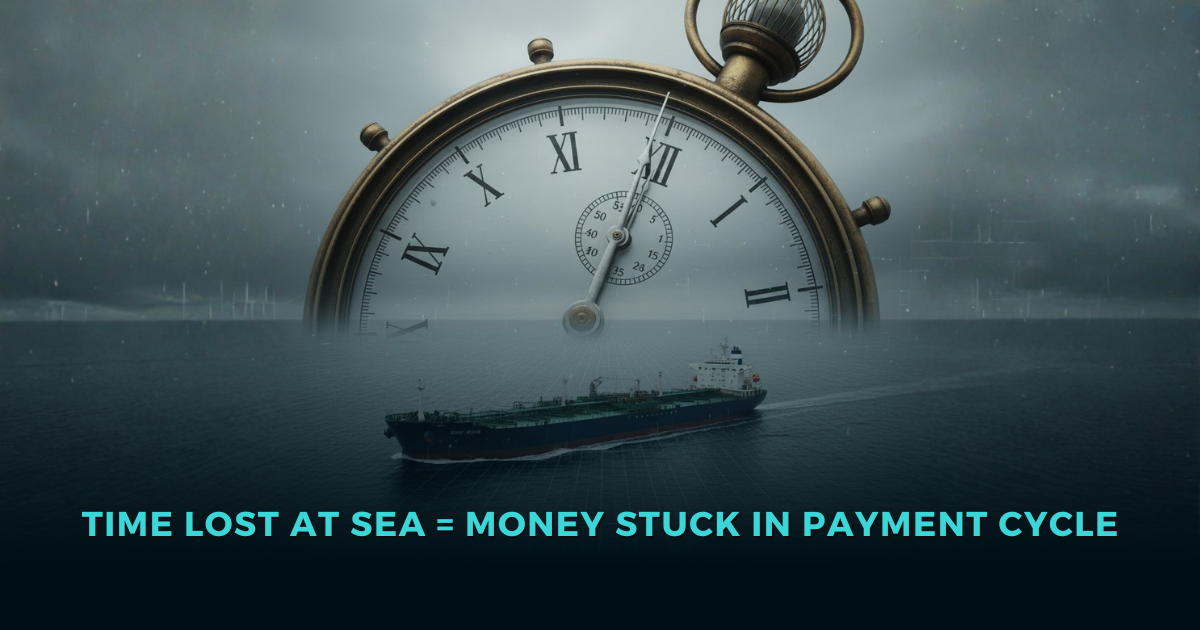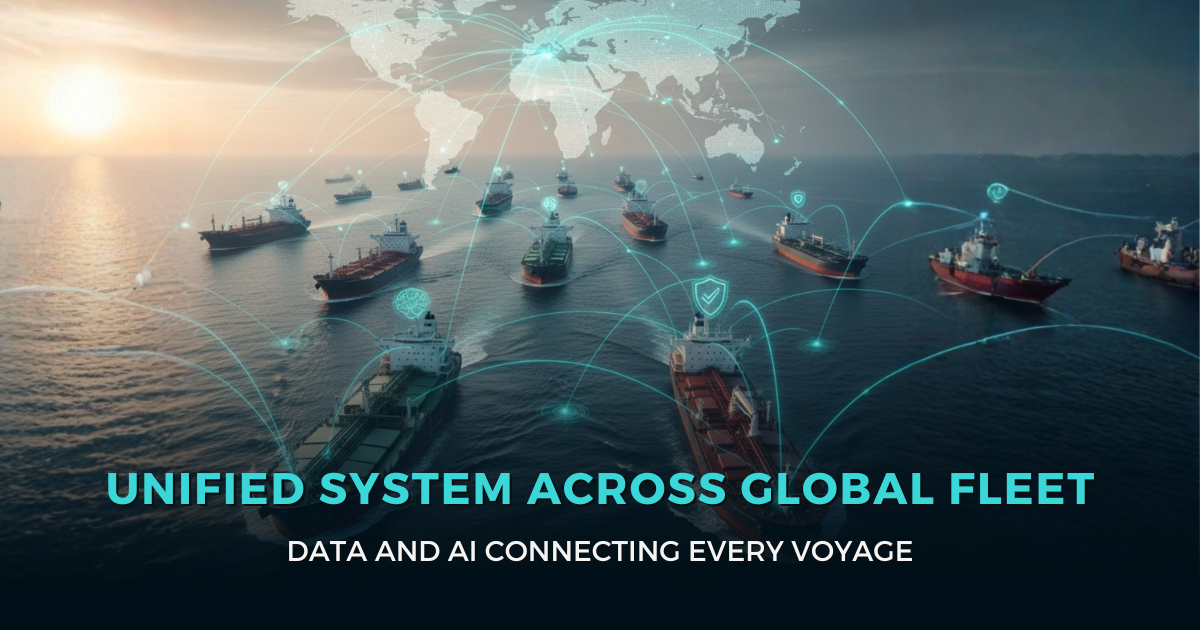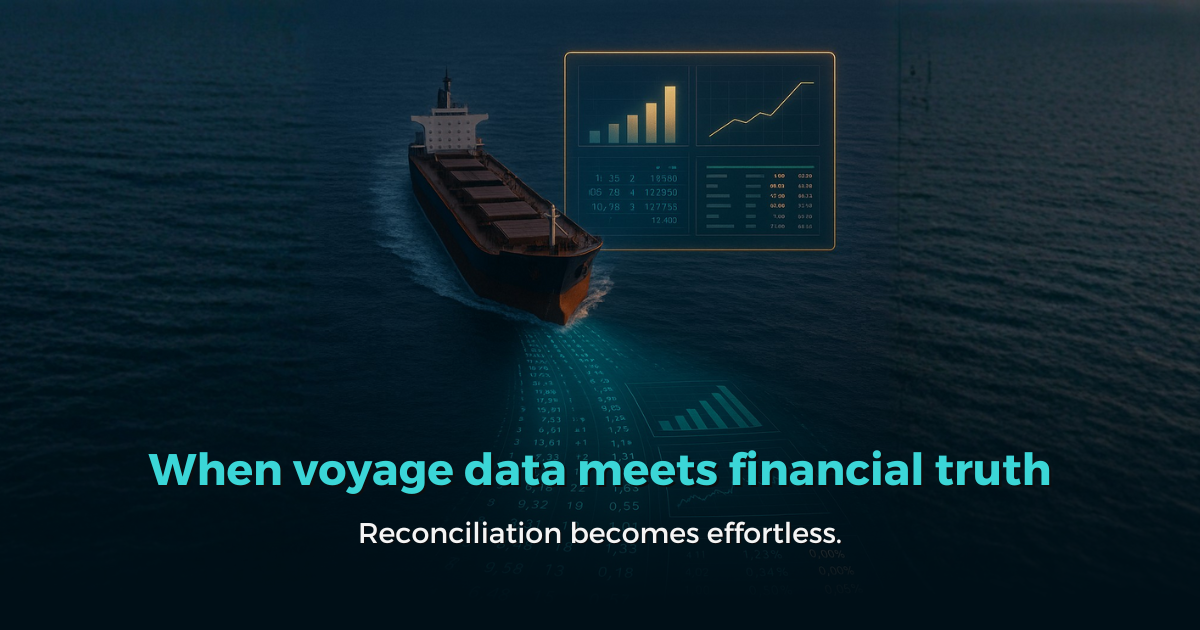Why Maritime Payment Delays Reached 42 Days. Business Impact & What Operators Can Do
Summary In recent maritime logistics literature, payment delays across freight, shipping, and related supply chain services have been found to...
Solutions Aligned with Maritime Roles
Model-Specific Business Solutions
Streamlined data insights
Optimized maritime voyage planning
Enhanced financial stability
Maritime-focused business banking
Access legal documents and policies.
Get solutions to all your questions.

For decades, spreadsheets have been the backbone of maritime finance. Every shipowner, operator, and chartering manager has a story about the Excel file that controlled cashflow, tracked receivables, or held voyage P&L.
But in 2025, those spreadsheets are less a solution and more an anchor. They slow decisions, hide risks, and fragment the very financial visibility the shipping industry needs in an era of sanctions, carbon pricing, and volatile freight markets.
The future isn’t another “macro-enabled workbook.” The future is integrated maritime finance software that unifies chartering, operations, analytics, and banking into a single view.
This article explores why spreadsheets no longer serve maritime finance, the hidden costs of fragmentation, and how integrated platforms like Marlo SaaS redefine financial resilience in shipping.
Excel and Google Sheets are great for static models. But shipping finance is anything but static:
Voyages shift daily with delays, deviations, and bunker price changes.
Invoices link to fixtures, vessels, and agents—not simple rows of data.
Regulatory costs (CII, EU ETS, sanctions) evolve dynamically.
A spreadsheet simply can’t capture this complexity without becoming a web of formulas only one person understands.
What looks like “free software” actually comes at a steep price:
Data Entry Errors: A misplaced decimal can cost millions in voyage miscalculations.
Version Chaos: Ten stakeholders, twenty file versions, and no single source of truth.
Delayed Decisions: By the time numbers are reconciled, the market has shifted.
Audit & Compliance Risks: Spreadsheets can’t provide reliable audit trails.
In finance, fragmentation equals exposure.
A typical shipowner today juggles:
Voyage P&L in Excel
Receivables/Payables in accounting software
Loan covenants in separate trackers
Sanctions screening in email attachments
Each system is accurate in isolation, but together they create blind spots.
Without integration:
You know what’s invoiced, but not what’s delayed.
You know bunker costs, but not their impact on loan covenants.
You see receivables, but not voyage-linked payment risks.
Result: CXOs can’t forecast working capital with confidence.
When sanctions lists or EU ETS allowances change, spreadsheets can’t keep up. This exposes companies to:
Frozen payments due to banking compliance checks.
Over- or under-purchasing of carbon credits.
Missed financial reporting deadlines.
Fragmentation isn’t just inefficient—it’s dangerous.
Integrated systems consolidate chartering, operations, and finance into a single data backbone. That means:
One invoice record tied to a voyage, vessel, and counterpart.
One receivables dashboard showing cashflow forecasts.
One compliance layer screening all transactions.
No duplication. No missing links. Just clarity.
Integrated maritime finance software allows managers to:
See voyage profitability in real time.
Simulate how bunker changes, delays, or carbon costs impact margins.
Share dashboards across chartering, operations, and finance instantly.
Instead of reconciling spreadsheets at month-end, leaders can steer decisions mid-voyage.
With integration:
Sanctions screening is automated at fixture, invoicing, and payment levels.
EU ETS allowances are calculated alongside voyage costs.
Audit trails are embedded in every financial transaction.
This ensures not just compliance, but also faster bank clearances and reduced payment delays.
As fleets grow, spreadsheets collapse under the weight of complexity. Integrated finance platforms scale effortlessly:
Add vessels without duplicating templates.
Manage multi-currency, multi-entity reporting.
Consolidate global operations into one group-level view.
Integration future-proofs maritime businesses.
Industry benchmarks show:
1 in 4 invoices in shipping are disputed or delayed.
Average DSO (Days Sales Outstanding): 55–70 days.
Data reconciliation takes 30–40% of finance team time.
In real terms: A 20-vessel fleet could be losing $2–3 million annually in opportunity costs due to spreadsheet-driven inefficiencies.
Integrated maritime finance software delivers:
Faster cash conversion cycles (10–15 days reduction in DSO).
Fewer disputes (clear voyage-linked invoices).
Lower compliance costs (automated screening).
Better financing terms (banks reward transparency).
ROI isn’t just cost savings—it’s stronger resilience, profitability, and competitiveness.
Voyage P&L Integration: Live profitability linked to fixtures, bunkers, and cargo.
Receivables & Payables Automation: Match invoices to voyages, reduce disputes.
Compliance Layer: Real-time sanctions checks, EU ETS calculations, and audit trails.
Analytics & Dashboards: Credit scores, cashflow forecasts, and loan covenant monitoring.
Marlo unifies chartering, operations, finance, and analytics into a single platform.
Dashboards for CXOs, ops managers, and chartering teams.
Integration with major accounting systems (Xero, QuickBooks, NetSuite).
Built-in modules for sanctions, CII, and EU ETS cost tracking.
Instead of building fragmented Excel models, companies get purpose-built maritime finance intelligence.
Audit Current Processes
Identify where spreadsheets drive critical workflows.
Quantify costs of errors, delays, and disputes.
Map the Integration Gaps
Where does chartering data fail to reach finance?
Where do banking/payment delays originate?
Invest in Maritime-Specific SaaS
Generic ERP systems can’t handle voyage economics or sanctions risk.
Adopt software designed for shipping’s complexities.
Train for Change Management
Finance teams must shift from “data entry” to data analysis.
Culture change is as important as software adoption.
Link Integration to Growth Strategy
Use transparency to negotiate better charter rates, lower loan costs, and faster payments.
Shipping’s financial environment is only getting tougher:
Carbon costs (CII, EU ETS) will continue to rise.
Sanctions will grow more complex.
Charterers and banks will demand real-time transparency.
Spreadsheets—fragmented, error-prone, opaque—can’t handle this future. Integrated systems can.
The companies that thrive will be those that treat integration not as a tech upgrade, but as a strategic shift in financial governance.
The end of spreadsheets in maritime finance isn’t a matter of convenience—it’s a matter of survival.
Integrated finance systems deliver what spreadsheets can’t:
One source of truth.
Real-time voyage profitability.
Automated compliance.
Scalable growth.
For CXOs navigating volatile freight markets, sanctions, and decarbonization costs, the message is simple:
Spreadsheets hide risks. Integration unlocks value. The future of maritime finance is connected, intelligent, and digital.

Summary In recent maritime logistics literature, payment delays across freight, shipping, and related supply chain services have been found to...

The maritime sector is entering a new software era. As regulatory pressure grows, data volumes explode, and commercial margins stay thin, shipowners...

In today’s fast‑moving maritime industry, operators struggle not only with navigating seas, but with navigating silos. Historically, the voyage...